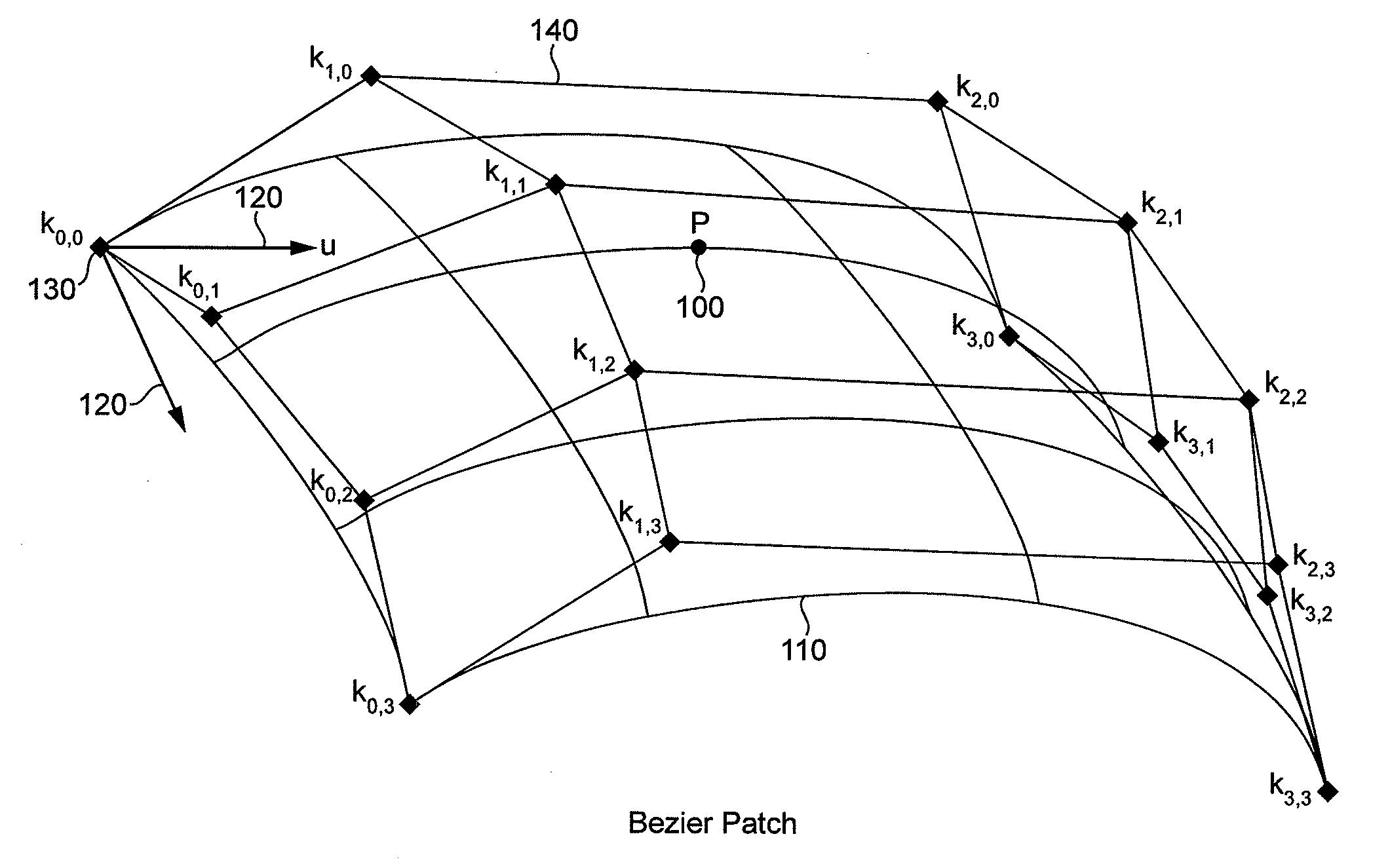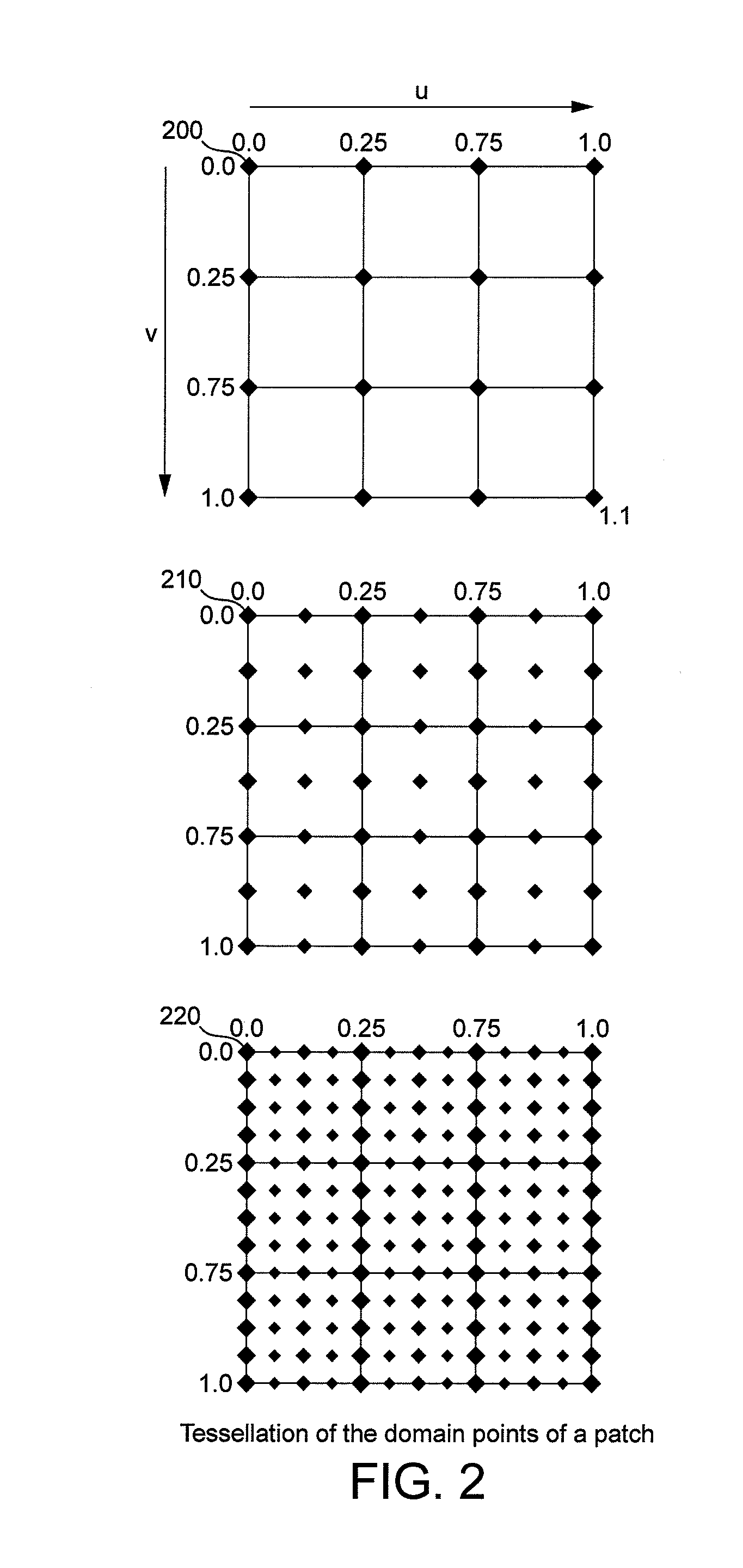Compression of a tessellated primitive index list in a tile rendering system
a tile rendering and index list technology, applied in the field of compression of tessellated primitive index list in the tile rendering system, can solve the problem that tile rendering requires substantial increases in both memory and bandwidth requirements
- Summary
- Abstract
- Description
- Claims
- Application Information
AI Technical Summary
Benefits of technology
Problems solved by technology
Method used
Image
Examples
Embodiment Construction
[0071]Tessellation of a patch results in a grid of domain points in domain space with positions determined by the tessellation parameters of the patch and a fixed function tessellation scheme. The tessellation algorithm can create triangle, line or point primitives from a patch.
[0072]D3D11's fixed function tessellation scheme generates domain points for the patch and assigns an index to each domain point. Domain points are generated in a spiral pattern that moves along each of the outer edges of the patch and inwards until the centre of the patch is reached. Indices are numbered in the order the domain points are created and therefore also increment around a spiral from the smallest index value (i.e. 0 in this example) to the maximum index value for the tessellation level (i.e. 15 in this example). FIG. 8 shows an example D3D11 tessellation of a quad patch into triangle primitives using odd subdivision and an edge tessellation factor of three applied to each edge. The spiral patter...
PUM
 Login to View More
Login to View More Abstract
Description
Claims
Application Information
 Login to View More
Login to View More - R&D
- Intellectual Property
- Life Sciences
- Materials
- Tech Scout
- Unparalleled Data Quality
- Higher Quality Content
- 60% Fewer Hallucinations
Browse by: Latest US Patents, China's latest patents, Technical Efficacy Thesaurus, Application Domain, Technology Topic, Popular Technical Reports.
© 2025 PatSnap. All rights reserved.Legal|Privacy policy|Modern Slavery Act Transparency Statement|Sitemap|About US| Contact US: help@patsnap.com



